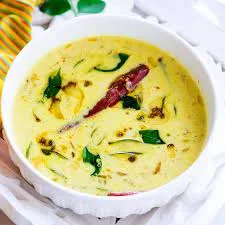- 1 cup rice flour
- 2 medium bananas (about 175 grams)
- 1/2 cup jaggery powder
- 1 teaspoon black sesame seeds
- 1/4 teaspoon baking soda
- 1/2 teaspoon cumin powder
- 1/2 teaspoon dry ginger powder
- 1/4 cup coconut oil or ghee, for frying
Instructions:
Rinse
the rice flour in water a couple of times. Then soak the rice flour in enough
water for 3-4 hours.
Drain
all the water and add the soaked rice flour to a blender.
Add
the bananas, jaggery powder, sesame seeds, baking soda, cumin powder, and dry
ginger powder.
- Blend until smooth.
- Pour the batter into a bowl and cover it with a lid. Let the batter ferment for 30 minutes to 1 hour.
- Heat a frying pan over medium heat. Add a small amount of coconut oil or ghee to the pan.
- Using a spoon, scoop a small amount of batter and drop it into the hot oil.
- Fry the unniyappams on both sides until golden brown.
- Remove the unniyappams from the pan and drain them on a paper towel.
- Serve hot or warm.
Tips:
For
a sweeter unniyappam, add more jaggery powder.
For
a spicier unniyappam, add more cumin powder and dry ginger powder.
You
can also add other ingredients to the batter, such as chopped nuts or raisins.
Unniyappam
is a delicious and easy-to-make sweet dish that is perfect for any occasion.
The origin of unniyappam, a traditional Kerala sweet dish made with rice flour, bananas, jaggery, and spices, is not well-known. However, it is believed to have a long and rich history that dates back centuries.
The name "unniyappam" is derived from the Malayalam words "unni," meaning "small," and "appam," meaning "rice cake." This name is quite fitting, as unniyappam are small, round fritters made from a batter predominantly consisting of rice.
Unniyappam is believed to have originated in the state of Kerala, India. They are a popular snack or dessert in Kerala and are often served with tea or coffee. Unniyappam is also offered as prasad in some temples in Kerala.
The exact date of unniyappam's creation is unknown, but the dish has likely changed over time as a part of Kerala's culinary traditions. Unniyappam are believed to have been associated with Hindu temples in Kerala for centuries. They are often made as a sacred offering during rites in Kerala Hindu temples.


